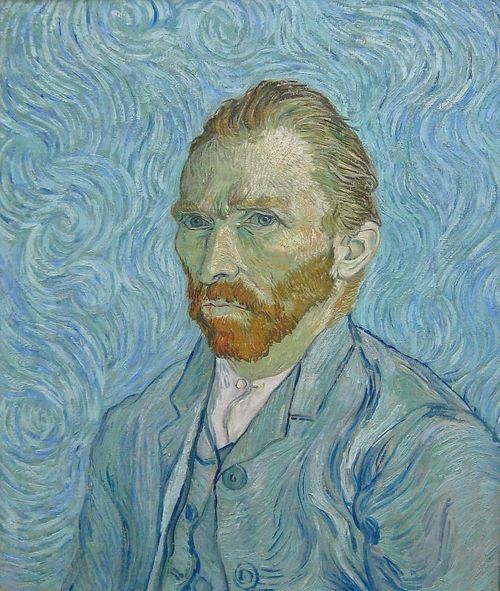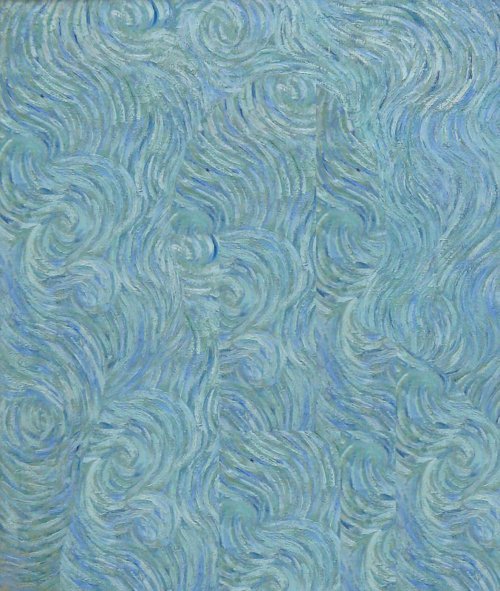- Kerrie Melissa Loy - Blogging inspiration, projects and all things design.
Don't wanna be here? Send us removal request.
Photo








Poster development and finished product
Concept/s:
- Aesthetic judgement is made and received with the eyes
- Eye is a motif for characterising others based on aesthetic judgements
- Cultural diversity expressed through use of several colours
- Conversely, black tears signify those who are marginalised from society
- No text on the poster highlights the notion of the aesthetic, rather than functional
Method:
1. Draw eyes according to size and positioning on poster
2. Paint subject with watercolours
3. Outline with black felt tip
4. Finish eyes with watercolour pencils and highlight using liquid paper
Materials used: watercolour paint, watercolour pencils, 2.0 black felt tip, liquid paper, lead pencil
3 notes
·
View notes
Text
Annotated Bibliography
1. Zangwill, Nick, "Aesthetic Judgment", The Stanford Encyclopedia of Philosophy (Summer 2014 Edition), Edward N. Zalta (ed.), URL = <http://plato.stanford.edu/archives/sum2014/entries/aesthetic-judgment/>.
This text explores the nature of individuals’ experiences and judgements about beauty and ugliness. Accordingly, the text allowed for a broader understanding of the term ‘aesthetic judgement’. Through examining Immanuel Kant’s characterisation of a notion called the ‘judgement of taste’, it is revealed that ‘aesthetic judgement’ is based on two conditions. The first is subjectivity, in which judgement of taste is based on a feeling of pleasure or displeasure. The second is universality. Therefore, this text suggests that aesthetic judgement is individual (based on the condition of subjectivity), although it is also a learnt behaviour as these judgements must claim “universal validity” (Kant 1790). It is through these conditions that culture can include or exclude others.
2. “For in the way you judge, you will be judged; and by your standard of measure, it will be measured to you.” (Bible, Matthew. 7.3)
There are several meanings attached to this quote in relation to aesthetic judgement. Firstly, it infers that individuals have the choice to either include or exclude others. Hence, suggesting that aesthetic judgement is individual. Secondly, the quote infers that the way you judge someone will effectively impact on the way you are judged as well, therefore, highlighting that aesthetic judgement is also a learnt behaviour. Although judgements are subjective, they are often provoked by other predetermined judgements that have “universal validity” (as mentioned in the first reference). This quote encourages individuals to judge accordingly in a way that is acceptable, and inform of the consequences that can occur if this is disobeyed (for example, exclusion of others).
3. (n.d.) (2008). Diversity Propaganda: August 2008 with quote. [image] Available at: http://1.bp.blogspot.com/_4IPuKr7Uw-o/SKyydUfpaTI/AAAAAAAAAF8/_8ITUdjDt6M/s400/27603~Diversity-Posters.jpg [Accessed 17 Aug. 2014].
This image and quote underlines the notion of diversity, which is essential to acknowledge within cultures to ensure that community is generated. It infers that similarities and differences, when brought together, can create a strong foundation, as represented through the several multi-coloured balls of yarn grouped together. Hence, it is important to acknowledge how much individuals have in common, and reinforce an environment that fosters diversity. As a result, this will allow for others to gain perspective and understanding of other cultures, which is crucial when working with people and building relationships. Furthermore, a culture that fosters diversity will eliminate people being marginalized and excluded from society.
4. Blade Runner. (1982). [film] USA: Ridley Scott.
This science fiction film uses several techniques and devices, in particular, the motif of an eye, which is a reoccurring symbol throughout the film. The eye is used in the film to determine an individual’s character by suggesting that people characterise others using superficial judgements. Evidently, this relates to the notion of aesthetic judgement, which is applied by individuals to either generate community, or conversely, marginalise people. In this story plot, it focuses mainly on the exclusion of ‘robots’ from society. This is portrayed through the use of film noir, a cinematic technique where films are mostly shot in gloomy grays, blacks and whites. Nonetheless, individuals make aesthetic judgements with their eyes, hence, it is an appropriate symbol to represent this notion.
0 notes
Photo

Practicing how to draw photorealistic eyes
0 notes
Video
youtube
How to draw realistic eyes (photorealistic) by Mark Crilley
0 notes
Photo

Eye Motif in film Blade Runner (1982)
0 notes
Quote
For in the way you judge, you will be judged; and by your standard of measure, it will be measured to you.
(Bible, Matthew. 7.3)
0 notes
Photo

Unpacking the question - definitions, word relations.
0 notes
Text
Research Question
Assessment 1: Poster (20%)
Chosen Question: Aesthetic judgement is an essential part of community building and friendship. Discovering you like the same band/film/food as someone builds a social bond seemingly far more solid than agreeing with someone on facts (such as who the prime minister is). How can culture be used to generate community, and conversely, be used to exclude or marginalise people? To what extent are aesthetic judgements individual or learnt behaviours?
0 notes
Text
COFA1002
From here on now, I will be using this blog to document my design process for course COFA1002.
0 notes
Photo

Week 5 Erasure
Erased de Kooning and Rauschenberg Drawing by Peter Palland
5 notes
·
View notes
Text

Van Gogh

Van Goghing

Van Gone
152K notes
·
View notes
Photo




Iteration 5: Erasure’s Legacy
When we lose, dispose, or get rid of something we do not know exactly where it goes. For example, through erasing marks left after erasure occurs, which involves the disposal of something, these items travel to waste plants. Nonetheless, their exact location is unknown. As a result, erasure leaves merely a legacy of an item or person.
How do we feel when we lose something? Disposing of things is a part of life and everyday routine, however, we have become detached to the meaning we hold to certain objects and dispose of things without thought. Even genocide leaves a legacy of history, as it is essentially an act of erasure.
How do we feel when we lose someone? Similarly, when a person passes away, we are unaware about where their spiritual self will go. In my experiment, I aimed to reveal how society has become detached to getting rid of people, in this case, homeless people. I conducted this by taking photographs and obtaining images from the internet of homeless people and editing them out of the image using photoshop. This raises questions such as where did they go? If we saw a car unlocked and opened without anybody inside, we would question where that person is.
So, is there much of an impact about seeing no homeless people on the streets? The reality is, there isn’t. Accordingly, there is a sense of detached meaning to life as the significance of certain groups are ignored. However, isn’t erasure of the homeless good? Doesn’t that mean there are no people living on the streets? The dilemma continues, but what is apparent is the idea that society has become detached to the meaning of certain objects or people, and consequently, this raises questions and ethical concern surrounding the role of erasure in everyday life.
0 notes
Photo




Iteration Four: Repeating Erasure
How do we erase what is left after erasure occurs? Can erasure be repeated on the same subject?
Evidently, the action of erasure often does not result in complete erasure. But then how do we achieve erasure? To combat this dilemma, my experiments involved the disposal or erasing of the mark that is left after something is erased. As a result, erasure can be repeated on the same action, however, it must have an alternative method of how it was done in the first place. For example, you cannot re-burn ash to erase it, nor can you re-sharpen pencil sharpenings to erase them. As a result, complete erasure of objects and material will inevitably require some sort of disposal (e.g. Garbage bin, delete image/speech and empty trash on laptop), rather than another erasive action (note: disposal is a form of erasure, but not complete erasure).
So, where do these items go? Is erasure really that hard to achieve?
0 notes
Video
tumblr
Iteration Three: Reversing Erasure
Experiment 3/3 Part 2/2 (original speech, reversed erasure)
*Tumblr isn’t letting my upload audio, so I video recorded it instead.
If erasure of something indadvertedly creates a mark, can the concept of erasure be reversed?
‘Erasure’ verse ‘reversing erasure’ are two opposing concepts, as erasure is the removal of something. If this is reversed, this definition is diminished. In the candle experiment, it is evident that erasure cannot be physically reversed. However, the use of electronic video footage and Quicktime software, has allowed me to play the footage of something erasing backwards. As a result, video and electronic software has enabled erasure to appear as if it has been reversed. Furthermore, other electronic forms and softwares have allowed erasure to occur, but also reversed, as code and speech can easily be replaced via copy and paste. Moreover, the software enables me to press undo or revert to original. Nonetheless, although contrary, the concept of erasure can be reversed, which has been made possible through electronic forms.
So then, how do we erase what is left after erasure occurs? Can erasure be repeated on the same subject?
0 notes


